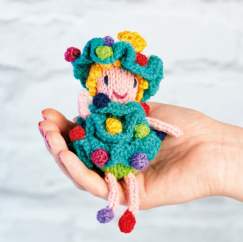You might also like these patterns...
You might also like these patterns...
-

Let’s Knit Together Member’s Mini Mag: Christmas 2025
Designer: Let’s Knit Together
-

Norwegian Star Christmas Stocking Knitting Pattern
Designer: Dawn Finney
-

Last Minute Knitted Christmas Gifts: Tie, Mug Cosy, Mittens
Designer: Val Pierce
-

Christmas Tree Doll Toy Knitting Pattern
Designer: Áine Marriott


_694_365_c1.png)


_Craftihive_Let_s_Knit_Website_Blog_-_7.9.25_HEADER_IMAGE-01__694_365_80_s_c1.jpg)

_694_365_80_s_c1.jpg)


_694_365_s_c1.png)
_694_365_s_c1.png)

_694_365_s_c1.png)
_694_365_s_c1.png)



 Baby
Baby
 Toys
Toys
 Garments
Garments
 Crochet
Crochet
 Homewares
Homewares
 Dolls
Dolls


